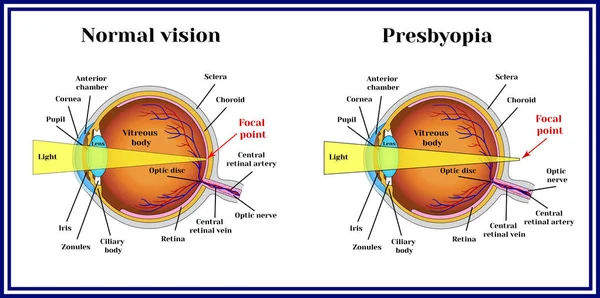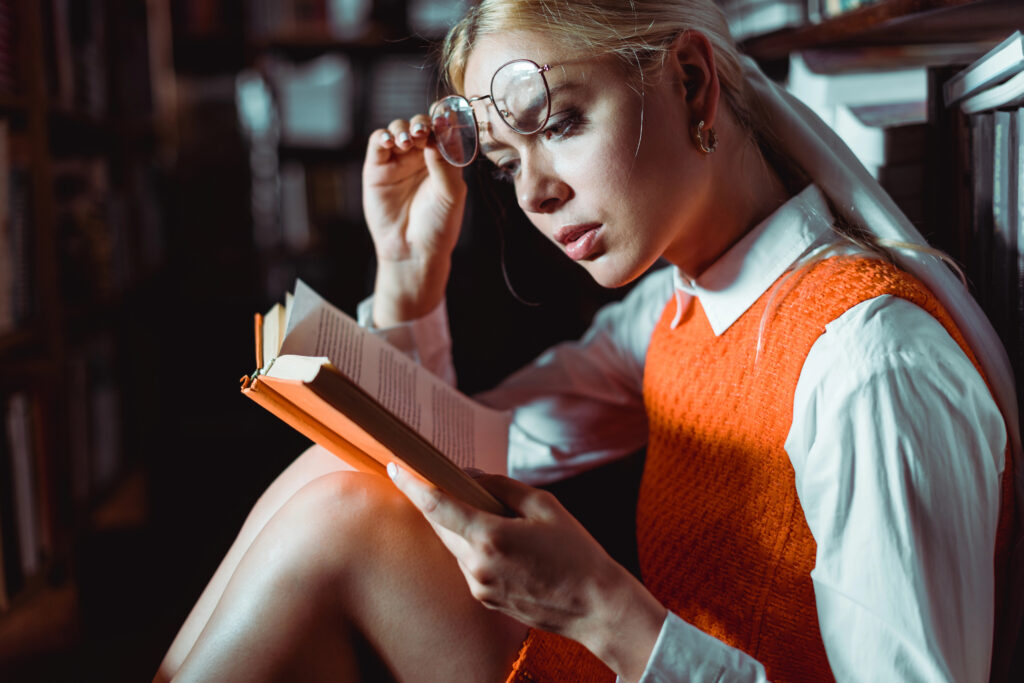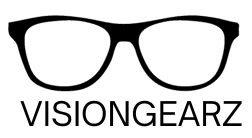Don't miss our holiday offer - up to 50% OFF!
Why Do We Use Reading Glasses
As we go through life, so many things about our bodies change. We lose strength, endurance, and flexibility. One change that catches many people by surprise is the sudden need for reading glasses due to a condition called presbyopia.
What is Presbyopia?

Presbyopia is a natural part of aging. It affects our eyes’ ability to focus on objects that are near. This condition becomes more noticeable around age 40 and progresses until about 65. It is just a normal part of getting older, like having gray hair or wrinkles.
It makes a person unable to focus on activities that require close-distance focus, like reading, sewing, or working on a computer.
What Causes Presbyopia?
To further understand presbyopia, let’s take a look at how the human eye functions.
The lens inside our eyes changes its shape when focusing on objects. It does this to adapt to different sight distances as needed.
When we’re young, this lens is flexible and can change shape easily. But, as we age, the lens becomes more rigid and has a harder time changing shape to focus on close objects. It’s somewhat similar to a camera with a stuck lens. It can still take pictures, but it just doesn’t zoom like it used to. That’s what’s going on in the eyes with presbyopia.
Who is at Risk for Presbyopia?
The short answer: Everyone!
If you live long enough, you’ll most likely experience it. Even if you’ve had perfect vision all your life, you’re still at risk. However, there are a few factors that can increase your risk or make presbyopia happen earlier:
- Certain Health Conditions: Diabetes, multiple sclerosis, and cardiovascular diseases can increase one’s risk.
- Farsightedness: People who are farsighted are at risk of early onset of presbyopia.
- Medications: Some medicines, like antidepressants, antihistamines, and diuretics, can cause side effects very much like those of presbyopia.
Signs That You Need Reading Glasses

How can you tell if presbyopia is starting to affect your vision?
- Squinting to Read Small Print: If you find that you’re squinting more often to read books, menus, or labels, then perhaps it is about time to get yourself a reading glass.
- Tired eyes and headaches: Do your eyes feel tired shortly after reading or other tasks? Are you experiencing more and more headaches? These are symptoms of eye strain from presbyopia.
- Taking off your prescription glasses to see things better:
- Holding Things at Arms Length: If you find yourself holding things at arm’s length to see them better, it’s a sign that your vision is changing!
- Trouble Seeing in Dim Light: Are you having difficulty reading when the light is dim? This can be an indication of presbyopia.
Getting Reading Glasses
The Diagnosis and Treatment of Presbyopia
Unlike with regular farsightedness, nearsightedness, and astigmatism, it’s more difficult to treat presbyopia using surgical solutions like laser eye treatment. This is why the best and most common treatment for presbyopia is using reading glasses.
When you visit an eye doctor, they will conduct a comprehensive eye exam. It usually includes a visual acuity test (the one with the charts) and other tests to determine the focusing ability of your eyes at different distances.
There are two main types of reading glasses
1. Prescription Reading Glasses: These are custom-made for your eyes according to your eye doctor’s prescription.
2. Over-the-Counter Reading Glasses: These may be sufficient for those with mild presbyopia or an existing prescription. However, caution needs to be taken because using the wrong strength can cause eye strain.
Your eye doctor may also suggest other options, such as bifocals, trifocals, or progressive lenses, specially designed for people who have presbyopia.
Living with Presbyopia
While you can’t prevent presbyopia, you can do a few things to reduce eye strain and keep your eyes healthy:
- Follow the 20-20-20 rule. For every 20 minutes, look at something at least 20 feet away for at least 20 seconds.
- Poor lighting can strain your eyes. Ensure the place where you read or work has good lighting.
- If you work on a computer, set your screen so it is at about an arm’s length distance and a little below the level of your eyes.
- Foods rich in vitamins A, C, and E and in omega-3 fatty acids help improve your eye health.
- Protect Your Eyes from UV Rays. When you’re outside, wear sunglasses that block 100% of the UV rays.
Read also: Are over-the-counter glasses safe to use?
